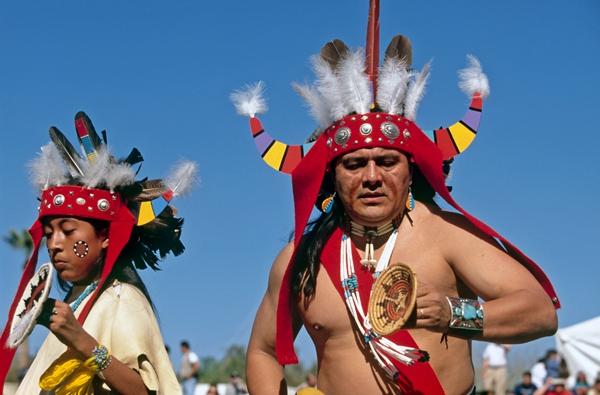(单词翻译:单击)
中英文本
John Hoffecker, an archaeologist at the University of Colorado at Boulder, drew attention to a study of an archaeological site called Bluefish Caves.
博尔德科罗拉多大学的考古学家John Hoffecker对 “蓝鱼洞”考古遗址非常感兴趣。
This is in Yukon, a Canadian territory that abuts Alaska.
遗址位于Yukon,是毗邻阿拉斯加的一块加拿大区域。
Some of the remains found in these caves date back 24,000 years.
洞穴中发现的一些遗骸可以追溯到24000年前。
They include stone tools and the bones of horses, caribou and bison, all with marks which imply those bones have been stripped of their flesh by such tools.
这些遗骸包括石器和马、驯鹿和野牛的骸骨,而这些骸骨上的一些痕迹都表明,骨头是被这些工具肢解的。
A third line of evidence, a genetic analysis, adds weight to all this.
第三个证据(利用遗传分析),使所有这一切更有说服力。
It compared 31 modern genomes from the Americas, Siberia and various Pacific islands with 23 ancient genomic sequences from archaeological sites in the Americas.
它将来自美洲,西伯利亚和各太平洋岛屿的31个现代基因组和来自美洲考古遗址的23个古代基因组序列做了比较。

The comparison suggested that Native-American genomes diverged from their Siberian ancestors no earlier than 23,000 years ago.
结果表明,最早是在23000年前,土著美洲基因组与他们的西伯利亚祖先的开始形成区别。
It also showed that the Native-American line was isolated for at least 8,000 years before big genetic splits within it took place as people spread through their new homeland.
这还表明,在人们通过他们的新家园传播大的遗传分化之前,美洲线被隔离了至少8000年。
Combining everything, then, it seems that the band of brothers and sisters whose descendants first populated the Americas lived somewhere between 25,000 and 23,000 years ago.
那么结合这一切来看,那些最先定居美洲的后代的祖先,在25000年前到23000年前也可能曾居住在一起,
Very neat, if it were not for the fact that archaeological evidence appears to show that areas outside Alaska and Yukon were colonised rapidly, starting soon after 15,000 years ago.
多亏考古证据的发现,让我们知道,阿拉斯加和育空附近从15000前开始被迅速的殖民统治。
That could be because the ancestral band and its descendants were confined for much of the intervening period to a region known to palaeogeographers as Beringia.
这可能是因为他们的祖先及其后代在这期间大部分被限制在了一个古地理学家称为地白令海峡的地方。
This was composed of what are now eastern Siberia, bits of Alaska and Yukon in the Americas, and the Bering Strait between them (which was then dry land).
这是由现在的西伯利亚东部,在美洲阿拉斯加和育空,和白令海峡之间(当时是旱地)组成。
Parts of Beringia were habitable wetlands and grassland steppe.
白令海峡的一些地方是可供居住的湿地和草原。
But the North American ice sheets to its east would have blocked any passage beyond.
但是东部的北美冰盖隔断了所有的通道。
That could account for the 8,000 years of genetic autarky in the ancestry of Native Americans,
这可以解释,印第安人的祖先在8000年里面,遗传基因的交流都仅限于所居住的地方,
for it was not until the ice sheets retreated (starting about 16,000 years ago), that anyone in Beringia would have been able to pass to the rest of the Americas.
但是从16000年前开始,冰盖开始慢慢的消失,使得居住在白令海峡的人能够到达美洲其他地方。
To explain how languages might have continued to diversify in a genetically stable population within Beringia,
DrSicoli认为,语言在白令桥这样一个基因稳定的地方变得如此多样化的原因是,
DrSicoli suggests its members may have lived in different habitats, separate enough for linguistic diversification,
在这个地区,人们住的很分散,分散到足以产生多样化的语音,
but mixing often enough to maintain a single gene pool.
但同时,这些多样化的语音足以融合形成单一的基因库。
The answer to the question, “how was America peopled?” seems tantalisingly close.
“美国是如何形成的?” 这一问题,似乎马上就可以知道答案。
考研英语时事阅读
重点讲解
1.date back 追溯
例句:This tradition dates back over 200 years.
这一传统可追溯到200多年以前。
2.took place 发生;举行
例句:The interview took place on a Friday afternoon.
采访是在一个星期五的下午进行的。
3.dry land 旱地
例句:Is it practicable to grow crops on this dry land?
在这块旱地里种庄稼是否可行?
4.drew attention to 吸引...的注意
例句:He drew attention to the rising unemployment.
他把注意力放到在升高的失业率上。


